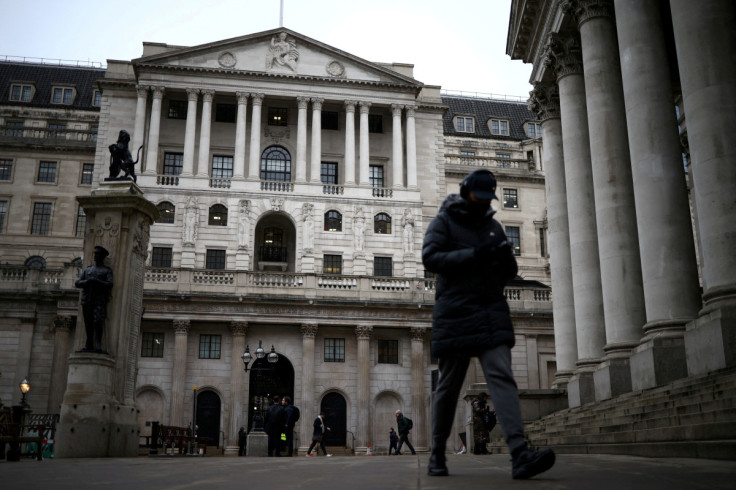BoE set to lift rates to 14-year high, might hint at next moves
The Bank of England is poised to raise interest rates for the 10th time in a row on Thursday to keep up its fight against rampant inflation, but it might also drop a hint about when the steep climb in borrowing costs will end.

The Bank of England is poised to raise interest rates for the 10th time in a row on Thursday to keep up its fight against rampant inflation, but it might also drop a hint about when the steep climb in borrowing costs will end.
With Britain's economy already forecast to go into recession and fare worse than its peers in 2023, Governor Andrew Bailey and his colleagues must judge how much of a delayed impact their run of rate hikes so far, starting in December 2021, will have.
Unemployment is close to its lowest since 1974 but the housing market is cooling fast and confidence among consumers and employers is weak.
Strikes by public service workers have added to the sense of gloom in an economy still struggling to adjust to Brexit and the coronavirus pandemic.
Bailey has said there are hopes that the surge in prices was turning a corner after consumer price inflation dipped from a 41-year high of 11.1% in October to 10.5% in December.
But underlying inflation has not fallen and wages are growing at the fastest pace on record apart from during the pandemic when state support distorted the data.
BoE Chief Economist Huw Pill has warned of the risk that price growth will get stuck above the BoE's 2% target.
"I am more worried that underlying inflationary pressures are far from played out," John Gieve, a former BoE deputy governor, told The Times. "Earnings in particular are growing strongly especially in the private sector and firms still expect to be able to raise prices."
Investors are largely pricing another half percentage-point rate hike at 1200 GMT on Thursday, taking Bank Rate to 4.0%, its highest since 2008, though some see a slim chance of a quarter-point move.
On Wednesday, the U.S. Federal Reserve slowed the pace of its rate hikes with a quarter-point move but said it expected further increases would be needed.
The European Central Bank looks set to raise rates by a half a percentage point on Thursday to 2.5% and the main question for investors is how much more tightening it will signal.
LOWER RATES PEAK
As of Wednesday, investors were pricing a roughly two-in-three chance that BoE rates will peak at 4.5% by June, with the possibility of an earlier halt at 4.25%.
In the run-up to the BoE's November meeting, investors were expecting rates to peak at around 5.25%.
The fall in those market expectations will feed into the BoE's new projections on Thursday.
It is expected to say the economy will contract by less in 2023 than its November forecast of a 1.5% hit. Earlier this week the International Monetary Fund said Britain's economy would shrink by 0.6% this year.
The BoE's inflation forecasts are also likely to change with recent sharp falls in international gas prices and a rise in the value of sterling lowering inflation later this year.
But the less dismal - albeit still weak - growth outlook could push up the BoE's forecasts for inflation in two and three years' time.
Paul Dales, an economist with Capital Economics, said the central bank was approaching the moment when it would have to give new guidance about its rate plans, having promised up to now to act "forcefully" to combat inflation.
"We think lingering inflation pressures will mean rates stay at their peak for around a year before being reduced in 2024," Dales said.
Bailey and other top officials are due to hold a news conference at 1230 GMT.
The BoE is also due to update its estimate of the rate of unemployment that does not push up inflation. A rise in the non-accelerating inflation rate of unemployment would represent a lower speed limit on Britain's already slow economy.
(Writing by William Schomberg; editing by Jonathan Oatis)
Copyright Thomson Reuters. All rights reserved.





















